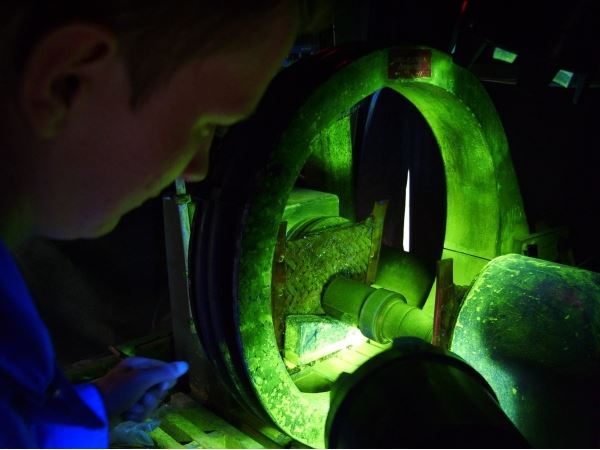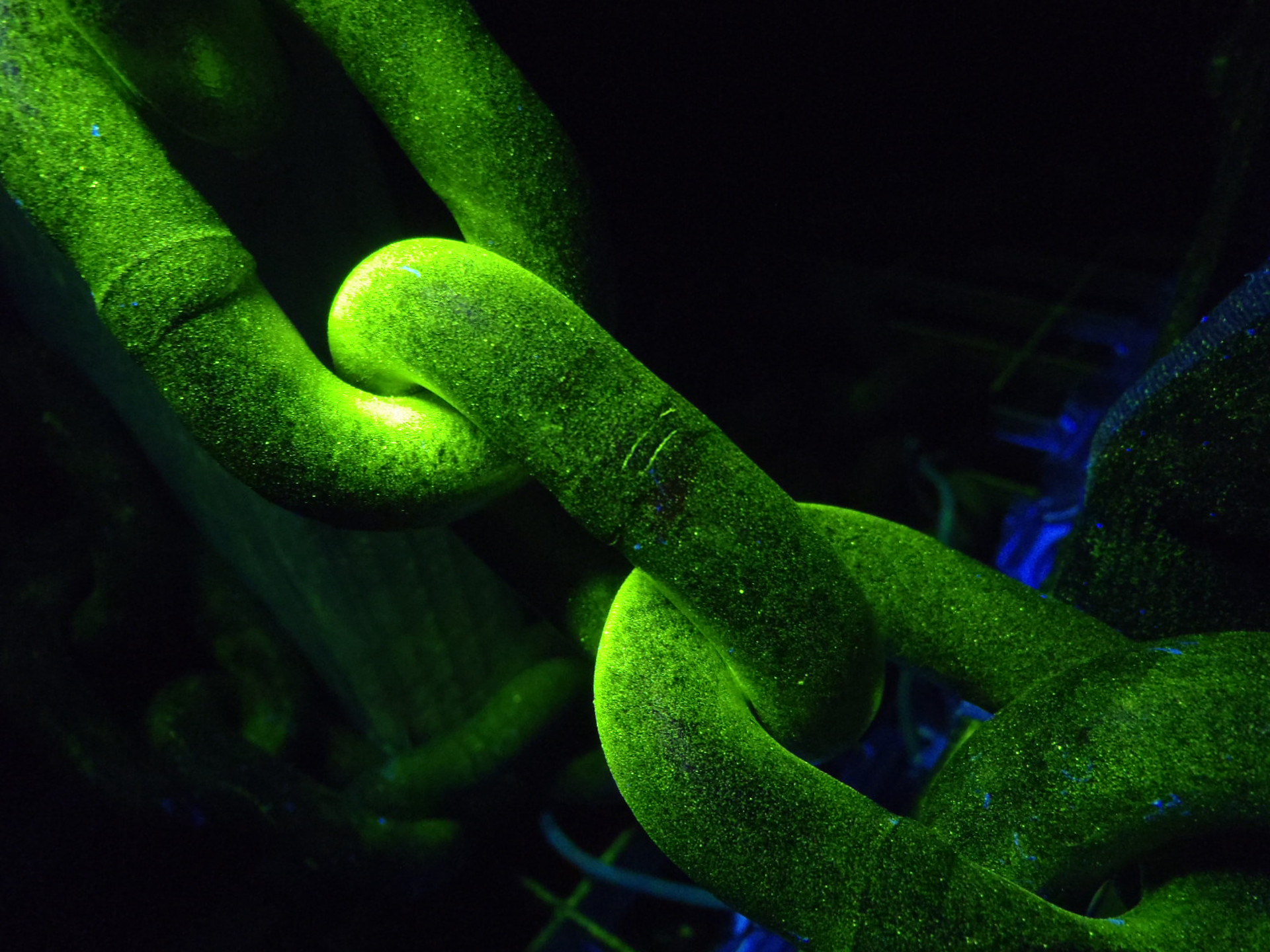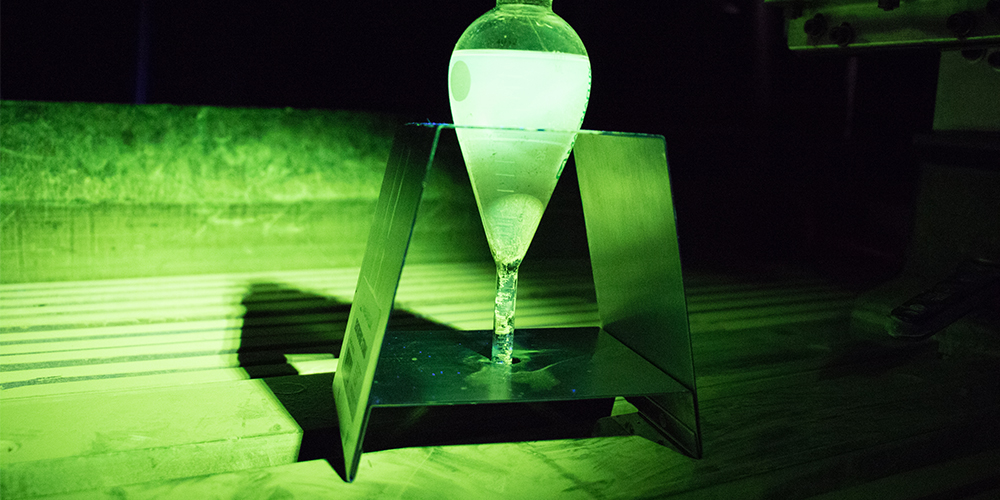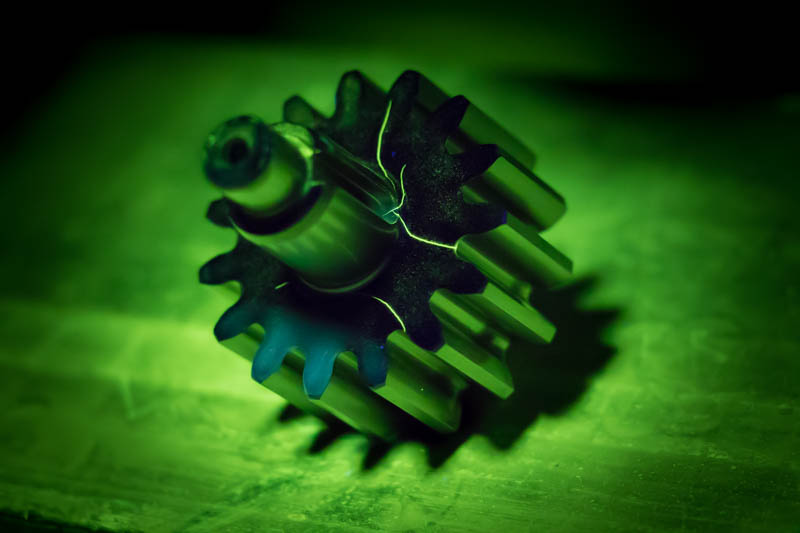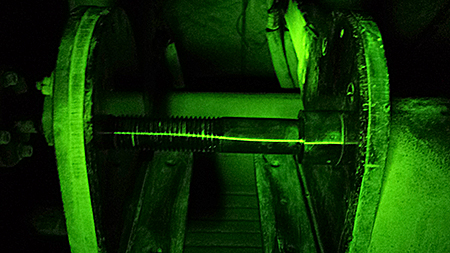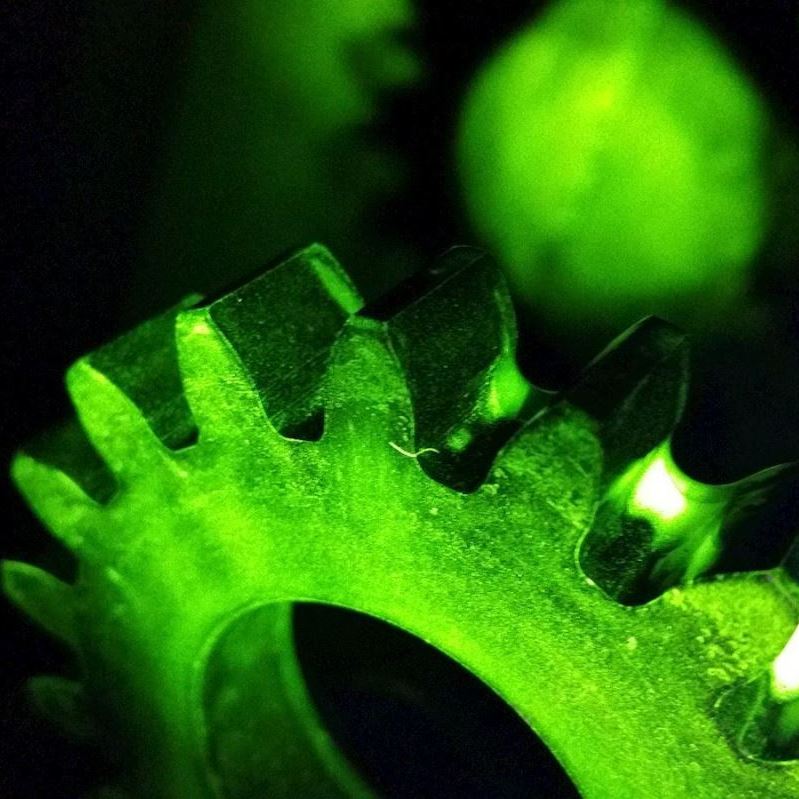Magnetic Particle Inspection
An extremely sensitive nondestructive testing method for use on ferrous materials, magnetic particle testing can detect minute cracks open to the surface, and some subsurface discontinuities. The productivity and sensitivity of this method makes mag particle inspection an industry inspection standard requirement.
Dry Particle Inspection
During dry particle magnetic inspection, particles are dusted onto the surface of the tested object while the object is being magnetized. Commonly conducted on rough surfaces or where detecting shallow subsurface cracks is needed.
Wet Fluorescent Magnetic Particle Inspection
Wet Fluorescent Magnetic Particle Inspection is performed using a 6,000 Amp (FWDC, 3 Phase) stationary unit that can test parts up to 12 ft in length. Written procedures to most specifications for (wet/dry) visible and fluorescent particles are available along with a variety of portable yokes and 1,000 Amp units for field inspection.
Magnetic Particle Testing Advantages
It can reveal surface discontinuities, including those too small or too tight to be seen with the unaided eye
Magnetic particle indications show the location and approximate size of the discontinuity
It can reveal discontinuities that are slightly below the surface
It is quick and relatively uncomplicated
It gives immediate indications of defects
It shows surface and near surface defects, and these are the most serious ones as they concentrate stresses
The method can be adapted for site or workshop use
It is inexpensive compared to radiography
Large or small objects can be examined
Elaborate pre-cleaning is not necessary


